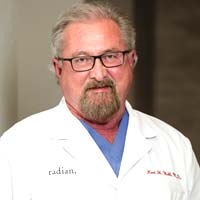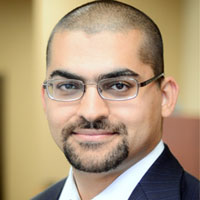Hair Loss Innovation: Beard-to-Scalp Hair Transplants
Hair transplants are nothing new. They have been around for
ages. What has changed over the years- and drastically - is the quality of hair
transplants. Not just due to better technologies and innovations - but also
because new medical discoveries and techniques continue to be refined.
Today a hair transplant patient has a result much different
than someone who may of had a hair transplant even twenty years ago. The
results are much more natural looking and the procedure itself was likely much
quicker overall.
For anyone who experiences hair loss, the desire to restore
their locks is great. Many are willing to do anything to try and get their
youthful appearance back. For some people who have already fallen victim to
hair loss and have a significant portion of their scalp visible, they are
usually today their hair loss is too far along, and a hair transplant will not
work.
Well now that too seems to be going away with a new
technique being used called “Beard-to-Scalp Hair Transplantation (BSHT). And just
like the name indicates, this is a hair transplant procedure that takes donor
hair from the beard of the patient and then transplants it surgically into the
balding areas on the scalp.
What this means is that patients who are even so far along
that they are considered class 5 and above in the hair loss stages, don’t have
to lose hope that they will no longer have a full head of hair. An answer has
arrived, and it’s already being implemented at many locations due to its
success rate. Now what’s your excuse?
Hairfear - 11-17-2014
Frequently asked questions about hair transplant procedures
How much does a hair transplant cost?
Hair transplants can vary in price based off of the area in the world that you are interested in getting a hair transplant as well as the size of the area where you may need a hair transplant. Experienced doctors in the United States will often charge some of the highest prices for a hair transplant worldwide and this is why so many travelers make the move to other parts the world like Turkey, India, Thailand, Mexico...etc for their hair transplants.
Will a hair transplant hurt?
Although hair transplants may look like a particularly
unpleasant or painful experience is actually very little discomfort involved
with the surgery itself. Hair transplants are always done under an anesthetic so there's absolutely zero pain during the treatment itself. Many people actually relate the process as being very similar to going to the dentist for filling or root canal. Mild pain can persist over the course of postop treatment but he generally just resumes for a few days.
Who can deliver the best surgery?
It's usually best to consider working with surgeons who have and IAHRS certification or international alliance of hair restoration surgeons recognition. IAHRS can often deliver recommendations for the best surgeons in each particular area.
Is this scarring noticeable?
Any type of hair transplant will require the use of incisions throughout the scalp. There can also sometimes be a small scar from the donor area towards the back of the scalp. Asking to look at photos of the surgeon's previous work will help you to see roughly how bad the scarring could be. In most cases an experienced professional can limit the look of scarring and noticeable marks from the surgery.
How long does it take for the hair to grow?
In most cases hair growth will start within eight months and you can start to see a full effect from the hair transplant after a full year. The initial signs of growth can usually start between 3 to 4 months after the surgery.
Are the results permanent?
The hair follicles that are transplanted are generally the ones which are genetically resistant against the symptoms of baldness. As long as you receive hair loss treatment later in your life after the symptoms of balding have started to subside, you can have a better chance at permanent results.
While everyone know you've had surgery?
If you want to limit the chance that people may find out about your surgery it's important to give at least three weeks of healing as the surgical area will be affected and red just after surgery. After around a month of healing it can look far less noticeable. You could consider wearing a hat while time passes or opting for some extra time off if possible.
How long should I rest after surgery?
It's recommended to rest for at least a few days after surgery so that your body can recover. Trenton to over exert yourself and limit sexual activity, running in the gym for around 10 days after surgery.
Is it possible to lose more hair as a result of surgery?
There is always a chance of shock loss which happens when the hair is weak and miniaturizing after the surgery. As long as the surgeon is choosing the correct hair follicles and performing the surgery well it's possible to minimize the chance of this happening however.
Will I need another hair transplant?
The need for another transplant really depends on the individual. With a solid foundation surgery and working to potentially bolster results with drug therapy, you can improve the stability of the hair that was transplanted as well as prevent further loss. Getting a hair transplant early
on in your 20s or early on in life could lead to needing long-term transplants as hair loss can be progressive.







